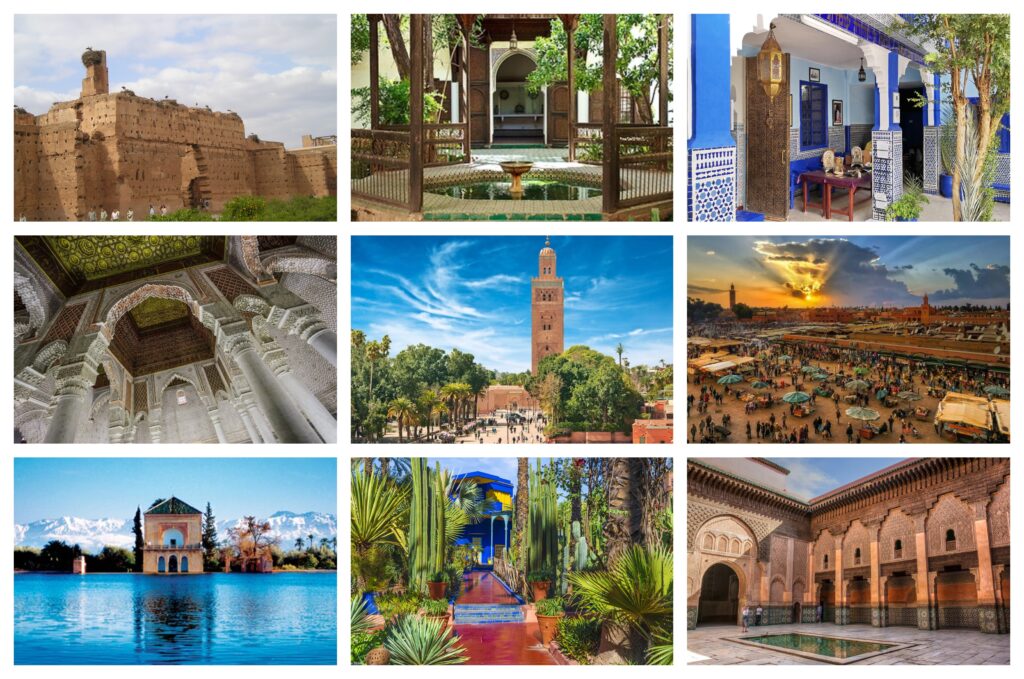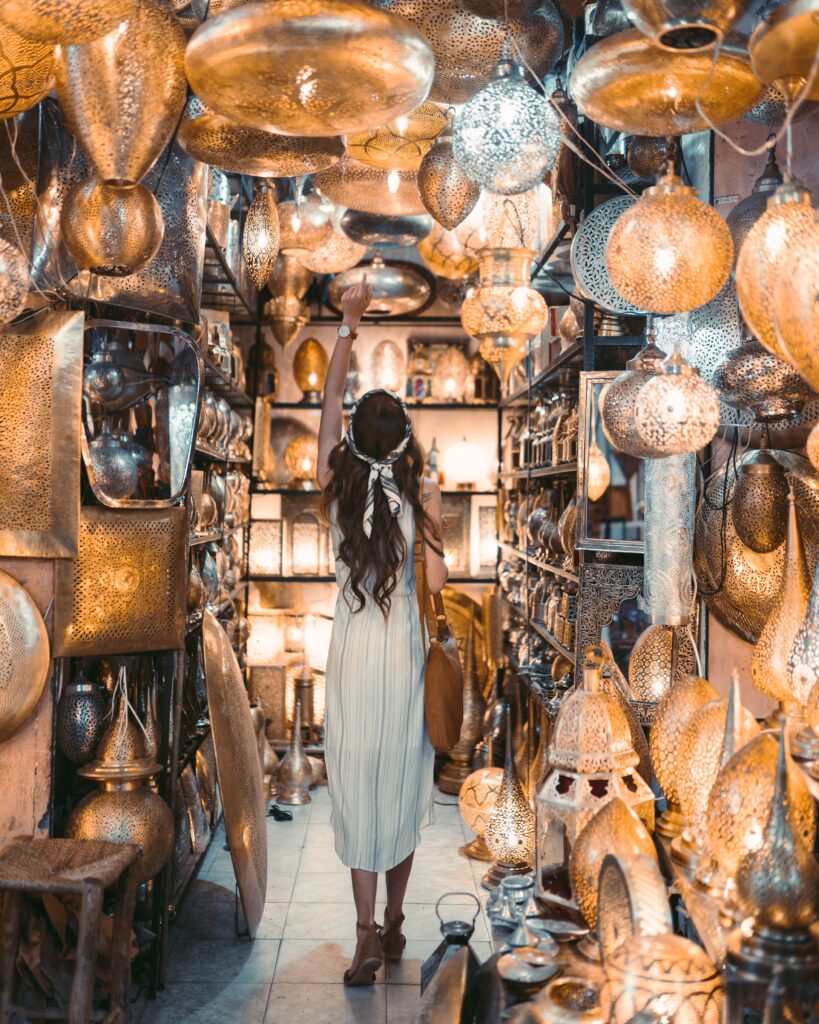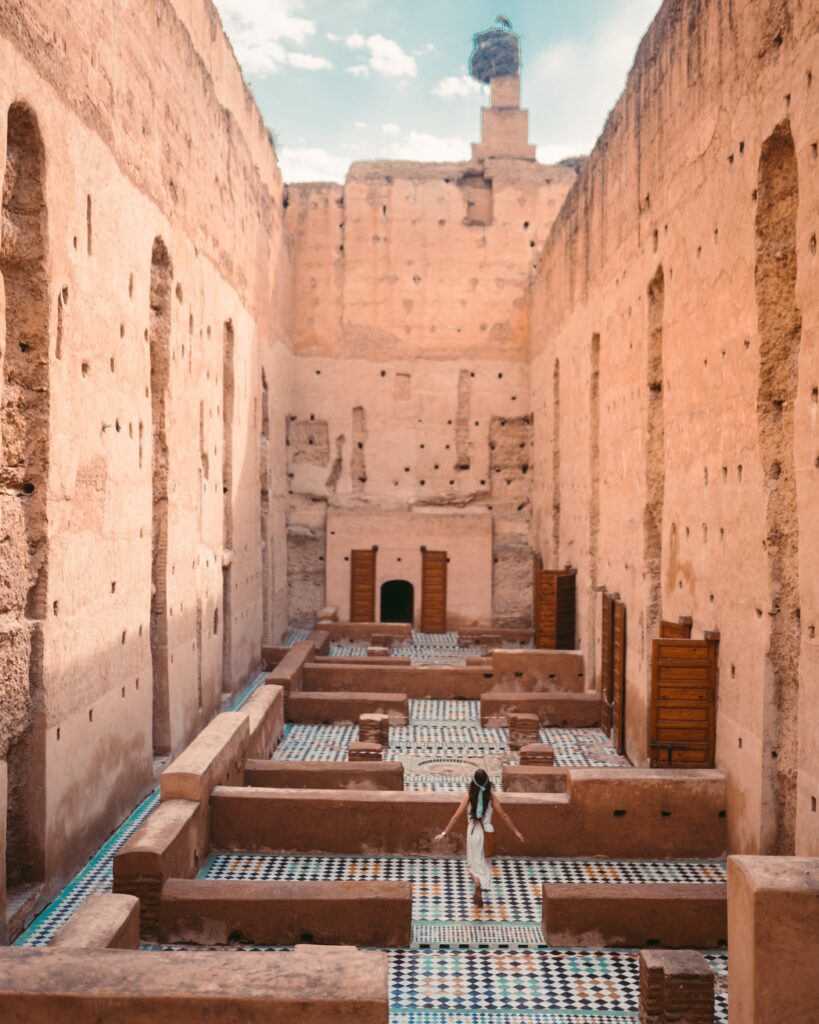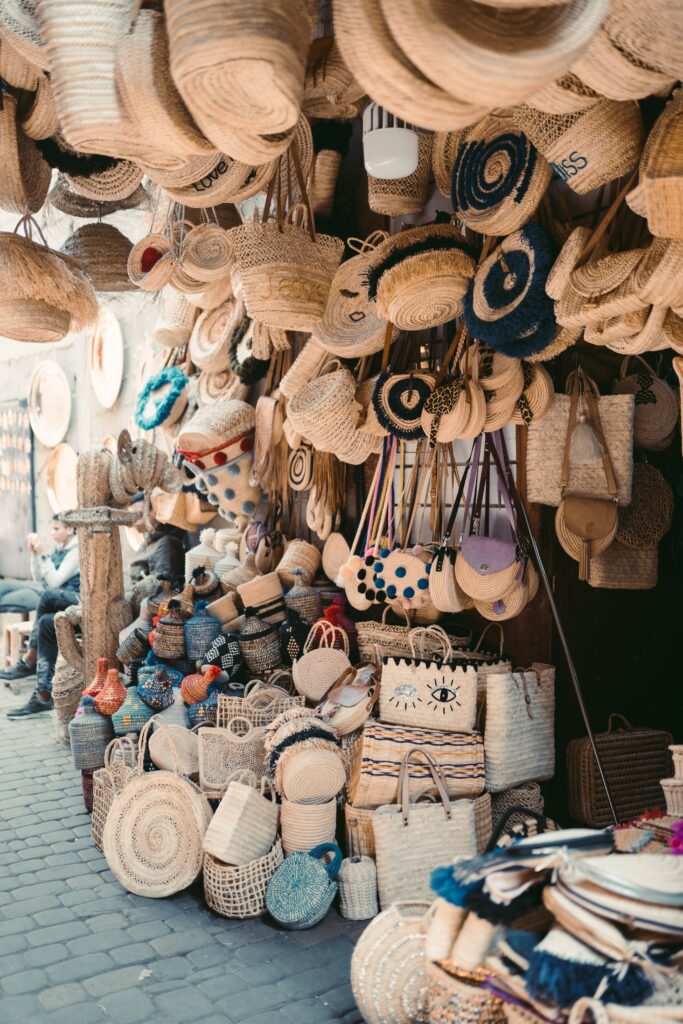
Close

Marrakech, also spelled Marrakesh, is the first of Morocco’s four imperial cities, it lies in the center of the fertile, irrigated Haouz Plain, south of the Tennsift River. Marrakech gave its name to the kingdom of which it was long the capital. It was founded in the mid-11th century by Yūsuf ibn Tāshufīn of the dynasty of the Almoravids, and it served as the Almoravid capital until it fell to the Almohads in 1147.
Surrounded by a vast palm grove, the medina in Marrakech is called the “red city” because of its buildings and ramparts of beaten clay, which were built during the residence of the Almohads. The heart of the medina is Jamaa el-Fna square, a vibrant marketplace. Nearby is the 12th-century Kutubiyyah (Koutoubia) Mosque with its 253-foot (77-metre) minaret, built by Spanish captives. The 16th-century Saʿdī Mausoleum, the 18th-century Dar el-Beïda Palace (now a hospital), and the 19th-century Bahia royal residence reflect the city’s historical growth. Much of the medina is still surrounded by 12th-century walls; among the surviving gates to the medina, the stone Bab Agnaou is particularly notable. The modern quarter, called Gueliz, to the west of the medina developed under the French protectorate. The ancient section of the city, known as the medina, was designated a UNESCO World Heritage site in 1985.

One visit to Marrakesh is surely not ennough in order to explore all what the city has to offer. The majority of visitors stay near the medina where the majority of monuments and souks are located. The main places to visit include:
This is a vast plaza at the heart of the medina(the old walled city), as old as Marrakech itself. The site of parades and executions in the past, modern city life is centred around the Jemaa El Fna.
Laid out in the narrow streets to the north of central Jemaa El Fna are a dizzying array of souks or bazaars. Different areas specialize in their own specific wares, selling anything from carpets, lanterns and slippers, to ingredients for magic spells.
Marrakech’s landmark monument boasts a tower that dominates the skyline for miles around. Like most mosques in Morocco, it is closed to non-Muslims but it’s an impressive sight.
A tranquil garden hidden at the end of the narrowest of meandering passageways shelters the royal tombs of one of Morocco’s ruling dynasties. They were shrouded from the world till the 1920s.
It reputedly took armies of labourers and craftsmen 25 years to complete the Badii Palace. When it was finished, it was said to be among the most magnificent palaces ever constructed, with walls and ceilings encrusted with gold and a massive pool with an island flanked by four sunken gardens. This grand folly survived for all of a century before another conquering sultan came along and stripped the place bare (a procedure that itself took 12
years) and carted the riches to his new capital at Meknès. All that survives today are the denuded mudbrick ruins.
It may not be Marrakesh’s oldest palace, but Bahia is definitely one of the city’s most eye-popping sights. Built by Grand Vizier Si Moussa in the 1860s, it was later expanded and embellished from 1894 to 1900 by his son and successor Abu ‘Bou’ Ahmed. The salons of both the petit riad and grand riad host intricate marquetry and zouak (painted wood) ceilings, but the Cour d’Honneur, or Grand Cour, with its 1500 sq m floor of Italian Carrara marble, is the undisputed highlight.
It is not the oldest or most significant of Marrakech monuments, but the medersa is one of the city’s most impressive buildings and allows entry to non-Muslims. It was built by the Saadian sultan, Moulay Abdellah around 1565, and was rebuilt in the 16th century. It displays all the fine decorative detailing that characterizes what was the golden age of Moroccan architecture.
Of Marrakech’s numerous gardens, these are the most famous and the legacy of an expatriate French painter, Jacques Majorelle, who considered himself a “gardenist”. In 1924, he acquired land and set about creating a botanical sanctuary around his studio. Majorelle opened his gardens to the public in 1947 and they remained a popular attraction until his death 15 years later. The property fell into disrepair until 1980, when it was rescued from ruin by French fashion designer Yves Saint-Laurent and his artist-friend, Pierre Bergé



Stork Marrakech
113 Rue Berrima, Toualat Bellarj
Marrakech, Morocco
Tel: +212 656 474 514
Tel: +212 808 565 264
stay@storkmarrakech.com